It continues to amaze the GGG how few NFG shareholders actually understand how to interpret the signifigance of most NFG news releases. This board needs to stop patronizing the nonsense from some of the new posters and bashers and start trying to read and comprehend company news from NFG. Some of our most valuable posters appear to be losing their foicus on what an an extraordinary junior miner that NFG has rapidly become, in such a short time. The GGG urges you to concentrate and take the time to
analyze this great news release.
Systematic Drilling Outlines New High-Grade Mineralized Vein Sets Over 630m Strike, Connecting Keats and 515 Zones
August 2, 2022 Vancouver, BC, August 2, 2022 – New Found Gold Corp. (“New Found” or the “Company”) (TSX-V: NFG, NYSE-A: NFGC) is pleased to announce the results from 17 diamond drill holes that were completed as part of an ongoing systematic drill program exploring a highly prospective segment of the Appleton Fault Zone (“AFZ”) immediately north of the Keats Zone. New Found’s 100% owned Queensway project comprises an approximately 1500km2 area, accessible via the Trans-Canada Highway approximately 15km west of Gander, Newfoundland and Labrador.
Keats North Highlights:
Keats North comprises multiple newly discovered high-grade gold veins in a corridor covering approximately 630m of strike northwards from the northern end of Keats Main to the recently discovered 515 zone, reported on April 13, 2022 (see Figure 1). Highlight results from recent drilling in this corridor include:
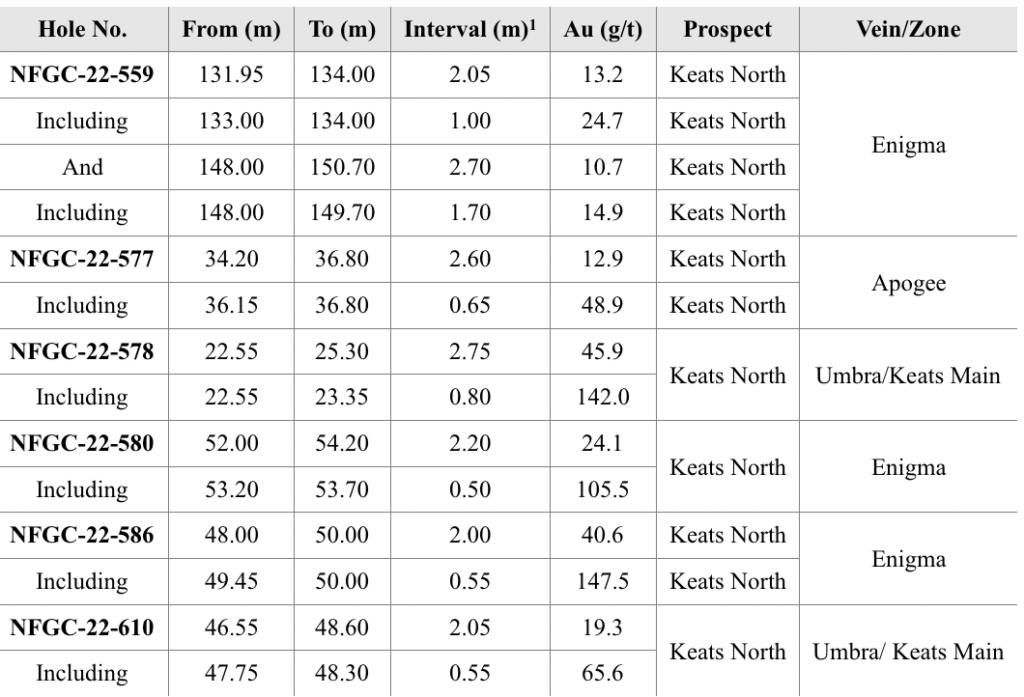 Table 1: Keats North Drilling Highlights
Table 1: Keats North Drilling Highlights
1Note that the host structures are interpreted to be steeply dipping and true widths are unknown at this time. Infill veining in secondary structures with multiple orientations crosscutting the primary host structures are commonly observed in drill core which could result in additional uncertainty in true width. Composite intervals reported carry a minimum weighted average of 1 g/t Au diluted over a minimum core length of 2m with a maximum of 2m consecutive dilution. Included high-grade intercepts are reported as any consecutive interval with grades greater than 10 g/t Au. Grades have not been capped in the averaging and intervals are reported as drill thickness. - These new results are defining an extensive network of mineralized veins including Umbra, Penumbra, Apogee, Enigma, and Perigee/515 over a roughly 630m long x 150m wide area linking Keats Main and the 515 discovery area (Figure 1). These veins start at the surface, are generally steeply dipping, and to date have been drill tested to a maximum vertical depth of 125m.
- Noteworthy intervals in these veins include:
- 45.9 g/t Au over 2.75m in NFGC-22-578 (Umbra);
- 19.3 g/t Au over 2.05m in NFGC-22-610 (Umbra);
- 40.6 g/t Au over 2.00m in NFGC-22-586 (Enigma);
- 24.1 g/t Au over 2.20m in NFGC-22-580 (Enigma);
- and 13.2 g/t Au over 2.05m and 10.7 g/t Au over 2.70m in NFGC-22-559 (Enigma).
- Due to a thin cover of glacial till there is very limited surface exposure of bedrock along the AFZ corridor including between Keats Main and Golden Joint, and until recently there had been essentially no drill testing of this gap. In early 2022 the Company implemented a program of systematic grid drilling between Keats and Golden Joint leading to the 515 discovery (43.9 g/t Au over 3.85m in NFGC-22-515 (reported April 13, 2022) and two near surface intervals of 8.70 g/t Au over 6.75m in NFGC-22-533 and 275 g/t Au over 2.15m in NFGC-22-538 (reported May 4, 2022).
- The results reported in this release are the initial assays following up on these discovery holes, with further results including several high priority holes anticipated in the next several weeks.
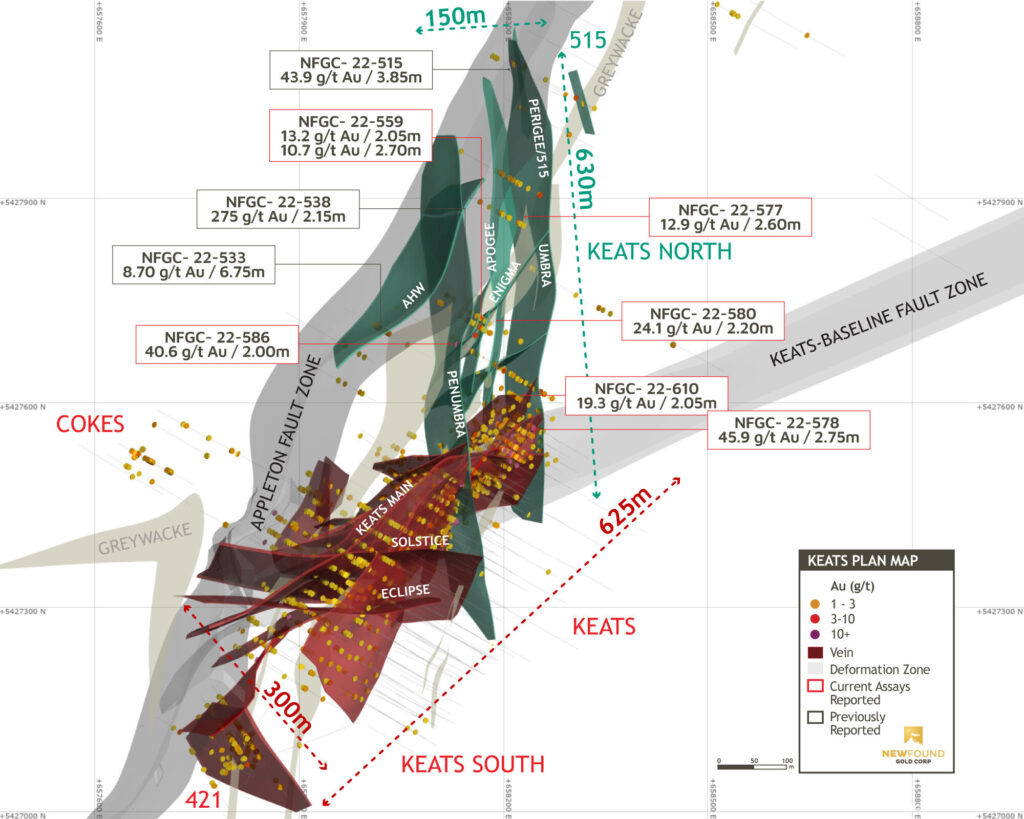 Figure 1. Keats 3D plan view map (150m-clipping)
Figure 1. Keats 3D plan view map (150m-clipping) VP of Exploration Melissa Render stated: “Our drilling is demonstrating that the corridor surrounding the Appleton Fault Zone is prolifically mineralized via a series of interconnected structures and vein sets that form a webbing shown to occur within a few hundred-meter-wide damage zone on either side of the of the primary, crustal-scale fault. These veins are not constrained by orientation or stratigraphy, which greatly increases the amount of strike length and the variety of lithological environments to explore. In specific areas, blow outs of gold mineralization occur where veins and structures cross paths, as illustrated at Keats Main, Lotto, and Golden Joint. The complexity and extent of the system provides an opportunity for discovery in a very large volume of prospective host stratigraphy.
We have now ramped up to 14 drills to continue to accelerate our exploration and rate of discovery. Today’s news outlines an area roughly equal to the strike length of Keats, connecting two zones together that were previously separate. Drilling in this area remains sparse and shallow, with several priority assays pending.”
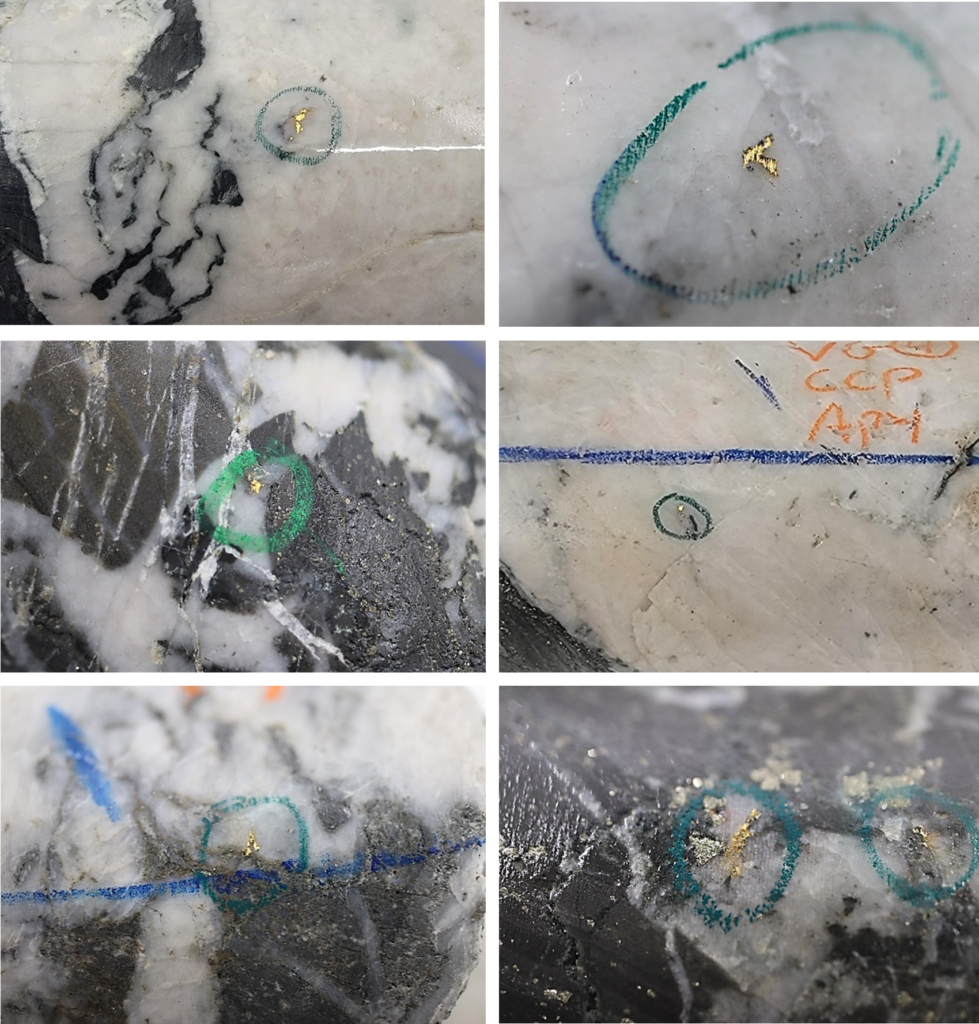 Figure 2: Photos of mineralization from: Top Left: at ~53.3m in NFGC-22-580, Middle Left: at ~149.6m in NFGC-22-559, Bottom Left: at ~47m in NFGC-22-610, Top Right: at ~ 133.5m in NFGC-22-559, Middle Right: at ~ 20.9m in NFGC-22-573 and Bottom Right: at ~ 49.9m in NFGC-22-586.
Figure 2: Photos of mineralization from: Top Left: at ~53.3m in NFGC-22-580, Middle Left: at ~149.6m in NFGC-22-559, Bottom Left: at ~47m in NFGC-22-610, Top Right: at ~ 133.5m in NFGC-22-559, Middle Right: at ~ 20.9m in NFGC-22-573 and Bottom Right: at ~ 49.9m in NFGC-22-586.
^Note that these photos are not intended to be representative of gold mineralization in holes NFGC-22-580, NFGC-22-559, NFGC-22-610, NFGC-22-573 and NFGC-22-586. Discussion
Mineralization at the Queensway Project is hosted by a fold-thrust sequence of northeast-striking, steeply dipping turbiditic sedimentary rocks deposited and deformed during the closure of the Iapetus Ocean and subsequent continent-continent collision. During this prolonged period of continued shortening, at least two regional-deformation zones developed and include the Appleton (“AFZ”) and JBP fault zones. The AFZ is interpreted to be a significant, deep-seated thrust fault that strikes southwest across the full 100km+ length of the property and is likely the main conduit for the gold mineralizing fluids, much like the Cadillac-Larder Lake Fault Zone in the Abitibi.
As a result of progressive deformation, the brittle host stratigraphy developed an extensive network of gold-bearing fault zones enveloping the AFZ, the extents of which are not yet known. Higher-grades and widths of gold mineralization occur in areas where there was greater mineralizing fluid flow such as at structural intersections, at dilational openings within fault structures, and along lithological contacts where breakage occurs due to rheological differences in the compressional strength of contrasting sedimentary rock units. A significant amount of the high-grade gold mineralization is interpreted to be epizonal in nature, having been emplaced when tectonic movements resulted in the explosive tapping of deep gold-rich magmatic fluids that rapidly precipitated gold as they migrated towards surface.
The Keats-Baseline Fault Zone (‘KBFZ’) is an extensive brittle fault zone that lies to the east of the AFZ and runs slightly oblique to it and has an east-northeast strike (N55°E) and dips to the southeast at approximately 60°. This fault forms an extensive damage zone that is discordant to the stratigraphy, and it controls the development of a complex network of brittle, high-grade gold vein arrays that are epizonal in character. Gold mineralization is characterized by the presence of quartz-carbonate veins with vuggy, stylolitic and/or brecciated textures which often contain trace amounts of arsenopyrite, chalcopyrite, boulangerite or pyrite, and which are associated with a NH4 muscovite alteration. A variety of fault and vein orientations have been encountered within and surrounding the KBFZ, forming a complex network of high-grade vein splays bifurcating from the KBFZ and the AFZ. Cross-cutting the Keats Main zone and forming important constituents of the KBFZ network are several conjugate brittle faults that are gold-rich and that create lenses of high-grade gold mineralization. Examples of such structures are the Umbra, Penumbra, Solstice, Eclipse, and 421 zones (Figure 1). The Umbra and Penumbra structures strike approximately north-south and have been intersected over a strike length of approximately 630m and are interpreted to play an important role for concentrating high-grade gold in the Keats North region.
Drillhole Details
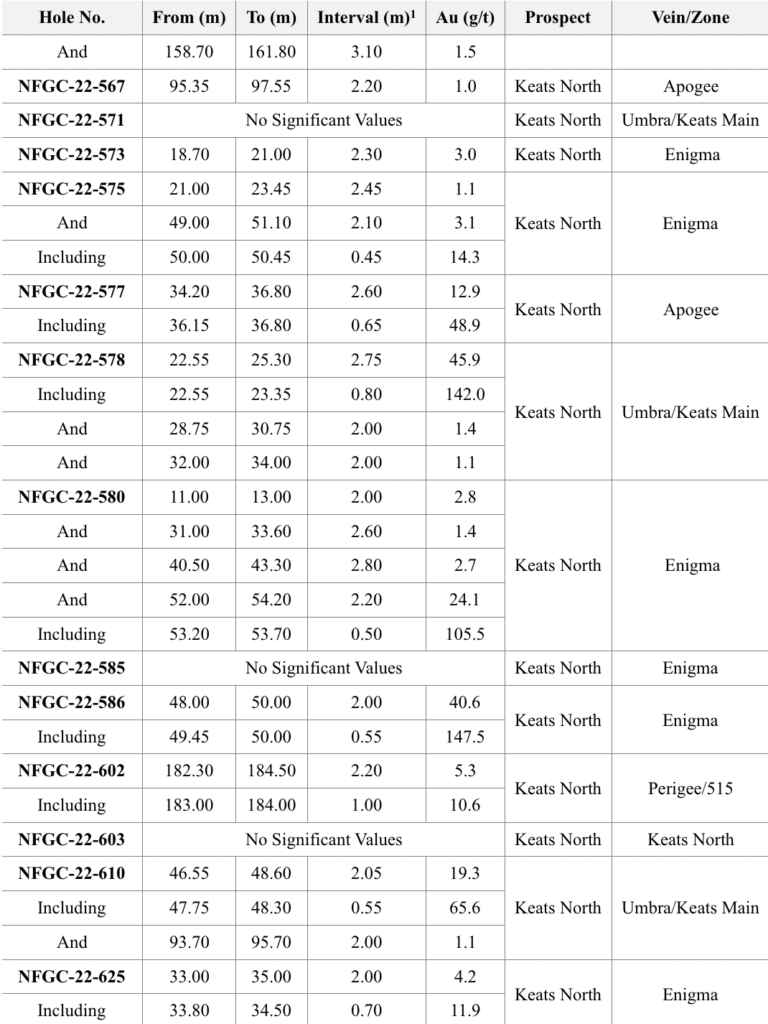 Table 2: Summary of composite results reported in this press release for Keats North
Table 2: Summary of composite results reported in this press release for Keats North
1Note that the host structures are interpreted to be steeply dipping and true widths are unknown at this time. Infill veining in secondary structures with multiple orientations crosscutting the primary host structures are commonly observed in drill core which could result in additional uncertainty in true width. Composite intervals reported carry a minimum weighted average of 1 g/t Au diluted over a minimum core length of 2m with a maximum of 2m consecutive dilution. Included high-grade intercepts are reported as any consecutive interval with grades greater than 10 g/t Au. Grades have not been capped in the averaging and intervals are reported as drill thickness. 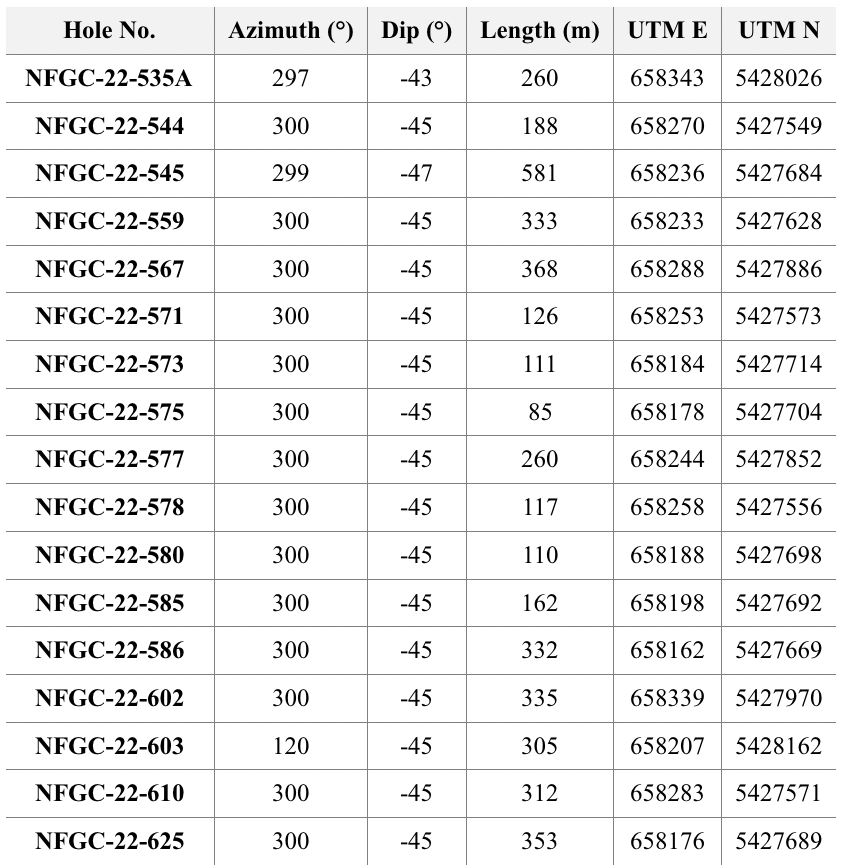 Table 3: Details of drill holes reported in this press release
Table 3: Details of drill holes reported in this press release Queensway 400,000m Drill Program Update
Approximately 56% of the planned 400,000m program at Queensway has been drilled to date with ~28,000m of the core still pending assay results. Fourteen (14) core rigs are currently operating meeting New Found’s targeted drill count for Q2.
Sampling, Sub-sampling, Laboratory and Discussion
True widths of the intercepts reported in this press release have yet to be determined and further exploration is required. Infill veining in secondary structures with multiple orientations crosscutting the primary host structures are commonly observed in drill core which could result in additional variability in true width. Assays are uncut, and composite intervals are calculated using a minimum weighted average of 1 g/t Au diluted over a minimum core length of 2m with a maximum of 2m consecutive dilution. Included high-grade intercepts are reported as any consecutive interval with grades greater than 10 g/t Au.
All drilling recovers HQ core. Drill core is split in half using a diamond saw or a hydraulic splitter for rare intersections with incompetent core.
A professional geologist examines the drill core and marks out the intervals to be sampled and the cutting line. Sample lengths are mostly 1.0 meter and adjusted to respect lithological and/or mineralogical contacts and isolate narrow (<1.0m) veins or other structures that may yield higher grades. Once all sample intervals have been chosen, photos of the wet and dry core are taken for future reference.
Technicians saw the core along the defined cut-line. One-half of the core is kept as a witness sample and the other half is submitted for crushing, pulverizing, and assaying. Individual sample bags are sealed and placed into shipping pails and/or nylon shipping bags, sealed and marked with the contents.
Drill core samples are shipped to ALS Canada Ltd. (ALS) for sample preparation in Sudbury, Ontario, Thunder Bay, Ontario, or Moncton, New Brunswick; an ISO-17025 accredited laboratory. ALS operates under a commercial contract with New Found.
The entire sample is crushed to approximately 70% passing 2 mm. A 3,000-g split is pulverized. “Routine” samples do not have visible gold (VG) identified and are not within a mineralized zone. Routine samples are assayed for gold by 30-g fire assay with an inductively-couple plasma spectrometry (ICP) finish. If the initial 30-g fire assay gold result is over 1 g/t, the remainder of the 3,000-g split is screened at 106 microns for screened metallics assay. For the screened metallics assay, the entire coarse fraction (sized greater than 106 microns) is fire assayed and two splits of the fine fraction (sized less than 106 microns) are fire assayed. The three assays are combined on a weight-averaged basis.
Samples that have VG identified or fall within a mineralized interval are automatically submitted for screened metallic assay for gold.
All sample pulps are also analyzed for a multi-element ICP package (ALS method code ICP61).
Drill program design, Quality Assurance/Quality Control and interpretation of results are performed by qualified persons employing a rigorous Quality Assurance/Quality Control program consistent with industry best practices. Standards and blanks account for a minimum of 10% of the samples in addition to the laboratory’s internal quality assurance programs.
Quality Control data are evaluated on receipt from the laboratories for failures. Appropriate action is taken if assay results for standards and blanks fall outside allowed tolerances. All results stated have passed New Found’s quality control protocols.
New Found’s quality control program also includes submission of the second half of the core for approximately 5% of the drilled intervals. In addition, approximately 1% of sample pulps for mineralized samples are submitted for re-analysis to a second ISO-accredited laboratory for check assays.
The Company does not recognize any factors of drilling, sampling or recovery that could materially affect the accuracy or reliability of the assay data disclosed.
The assay data disclosed in this news release have been verified by the Company’s Qualified Person against the original assay certificates.
The Company notes that it has not completed any economic evaluations of its Queensway Project and that the Queensway Project does not have any resources or reserves.
The GGG here, actually the last 4 NFG drill results were all incredible.
39. MAY 04, 2022 NFGC Hole 22- 533 hits 275 g/t over 2.15m and NFGC Hole 22-533 hits 8.7 g/t over 6.75m, for a combined total of 649.97 gram meters, at a new area north of the Keats zone.
40. JUNE 6, 2022 NFGC Hole 22-593 hits 42.6 g/t over 11.75m and 9.12 g/t over 8.20m, Hole 21-448 hits 55.1 g/t over 5.10m and Hole 21-364A hits 56.3 g/t over 5.65m. at Keats Zone. Modeling suggests approximately 125m in strike length and 35m wide.
41. June 8, 2022 NFGC Hole 22-552 hits 89.3 g/t over 2.0m equating to 178.6 gram meters, at Lotto Tuesday zone.
42. August 2, 2022 NFG Systematic Drilling Outlines New High-Grade Mineralized Vein Sets Over 630m Strike, Connecting Keats and 515 Zones
Noteworthy intervals in these veins include:
- 45.9 g/t Au over 2.75m in NFGC-22-578 (Umbra);
- 19.3 g/t Au over 2.05m in NFGC-22-610 (Umbra);
- 40.6 g/t Au over 2.00m in NFGC-22-586 (Enigma);
- 24.1 g/t Au over 2.20m in NFGC-22-580 (Enigma);
- and 13.2 g/t Au over 2.05m and 10.7 g/t Au over 2.70m in NFGC-22-559 (Enigma).
-